Alaska is definitely a beautiful state with a lot of amazing animals and landscapes. Alaska is the only state where you can find the Big Five animals (moose, bears, caribou, Dall sheep, and gray wolves) . So are you interested in visiting Alaska? How about learning more about it? Or maybe you’re just fascinated by the state’s beautiful scenery and wildlife? It doesn’t matter what your reasoning is, we’ve got all the information you need!
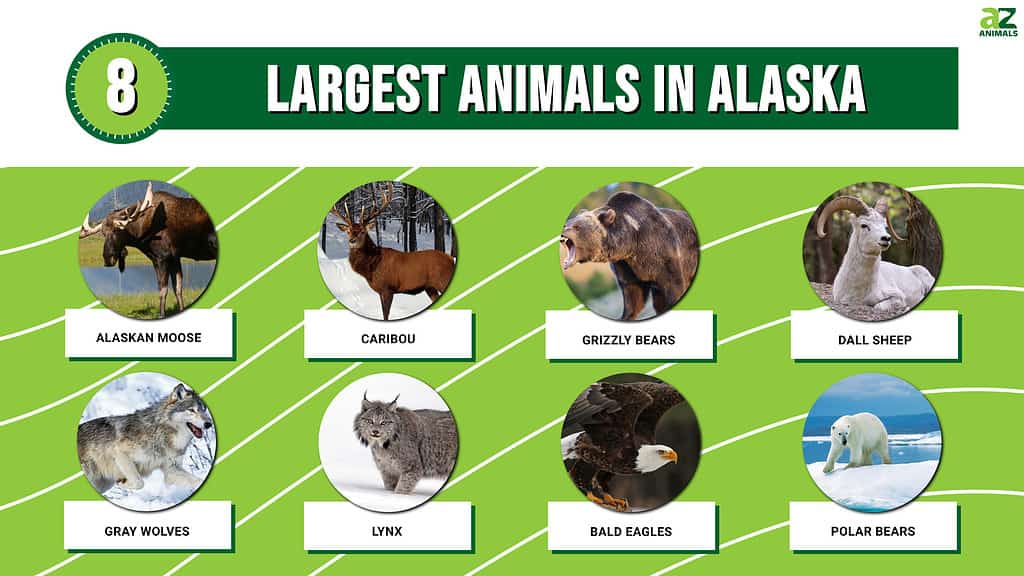
Here are the 8 largest animals in Alaska and where you can find them.
1. Alaskan Moose
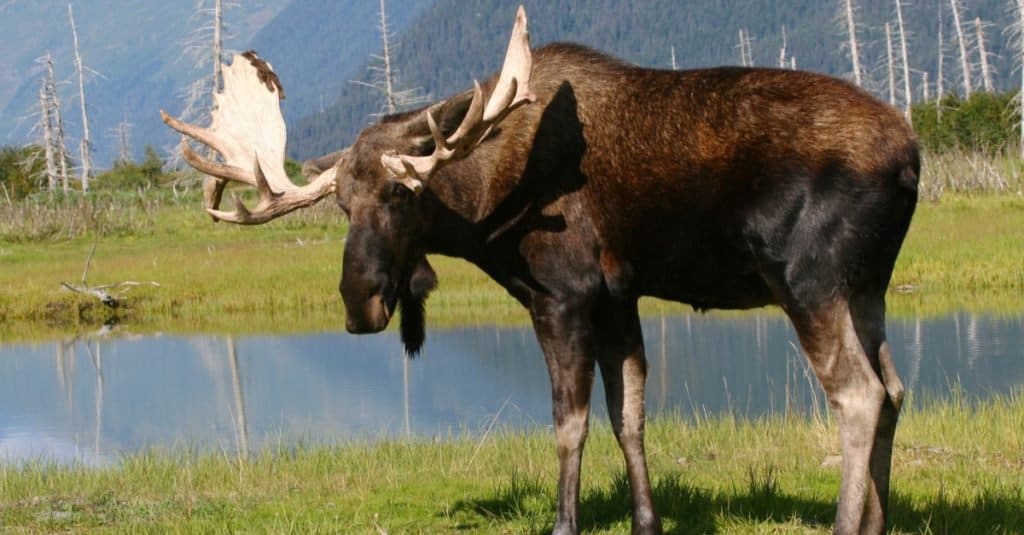
Alaskan moose are the largest species of moose in the world and the largest species of deer in the world.
©Steve Bower/Shutterstock.com
As one of Alaska’s state symbols, the moose is a great representation of the state. Among the deer and moose family, this majestic creature is the largest. It is estimated that a full-grown adult male of this species weighs 1,400 pounds and stands six feet tall. Their height is thanks to their huge antlers. A female is much smaller, and you may see them with their smaller calves, which have a reddish-brown coat, in late spring or early summer. In Denali National Park, you can find moose like this feasting on the vegetation as it wanders the grounds.
2. Caribou
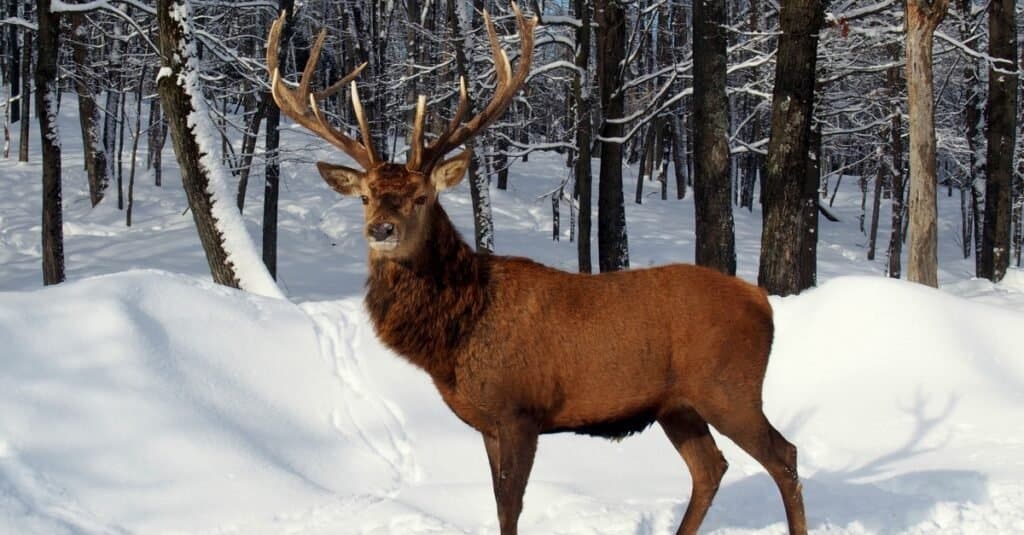
Technically,
reindeer
and caribou are the same species, but reindeer are far more common on farms and reserves than caribou.
©Nick Couckuyt/Shutterstock.com
The caribou, also known as the reindeer in Europe, are herd animals that live in the tundra and forage for food among the plants. Both sexes of the caribou (Cervidae) have antlers, which makes the caribou unique among the deer family (Cervidae). Antlers on adult males are large, massive, and dense. In adult females, on the other hand, antlers are shorter, slender, and less symmetrical.
Generally speaking, the weight of an adult male caribou ranges from 350-400 pounds (159-182 kilograms) at maturity. However, it’s been discovered that there are some that weigh over 700 pounds (318 kilograms). There is an average weight of 175-225 pounds (80-120 kilograms) for mature females. It is very likely that you will be able to see caribou in Denali National Park and Preserve, however, there is no guarantee because the herds are constantly on the move.
3. Grizzly Bears
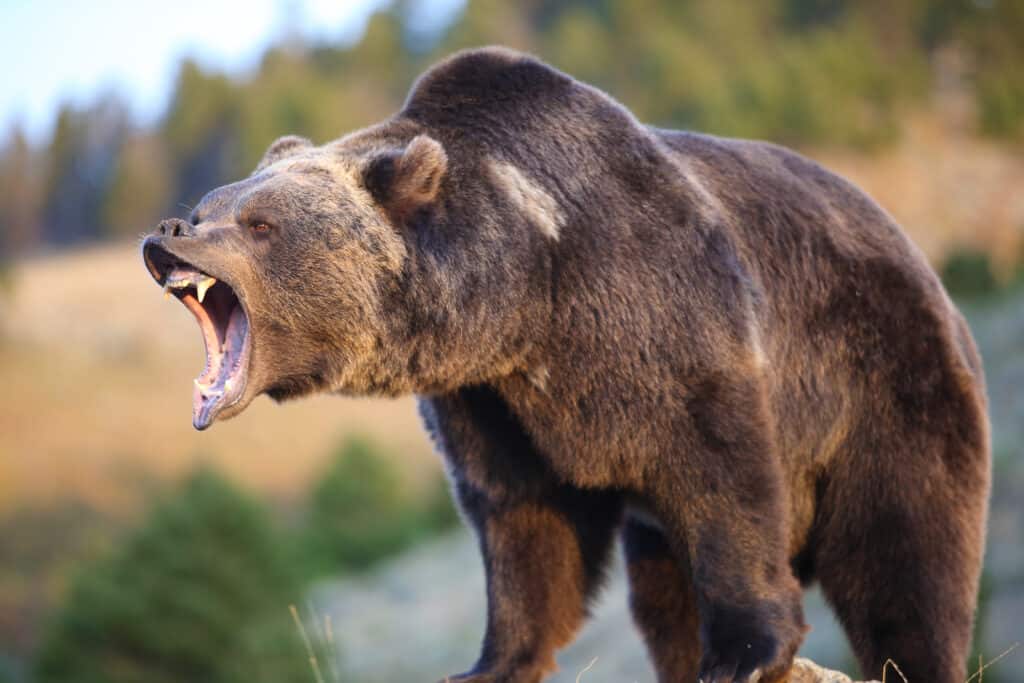
Alaskan Grizzlies are typically dark brown, but they can also be blonde or black in color.
©Dennis W Donohue/Shutterstock.com
The brown bear is also known as the grizzly bear in southern Alaska. It is abundant along the coast surrounded by lush vegetation and salmon streams. Throughout the summer, both salmon and vegetation serve as essential sources of food. Depending on their food supply, these bears vary greatly in size. There is about a two-thirds size difference between bears from the interior and those from the coast and islands. The average weight of an adult bear is 300 to 900 pounds and it stands between three and four feet tall. The grizzly bear is definitely one of the largest animals in Alaska that we wouldn’t want to randomly stumble across!
4. Dall Sheep
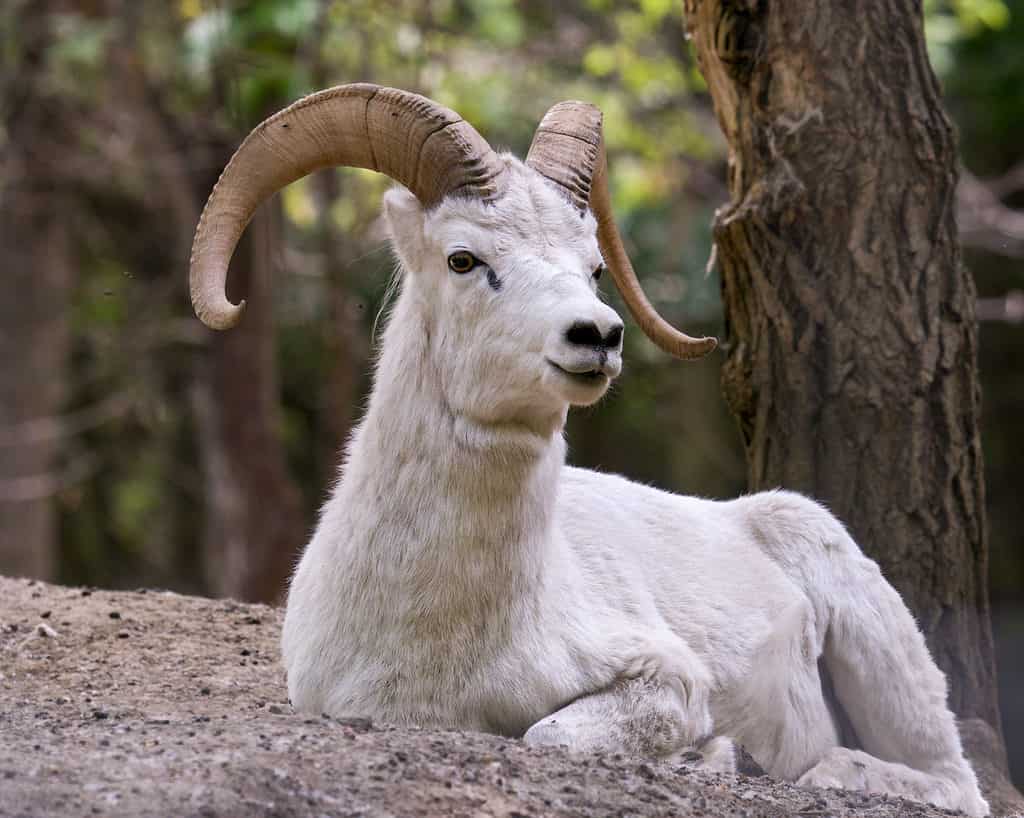
Male Dall’s sheep (ram) in a relaxed pose.
©iStock.com/Brian Reinke
In Alaska and British Columbia, the Dall sheep is a wild subspecies of Thinhorn sheep that are white in color. Dall sheep can be seen in alpine pastures and along ridges of the Kenai and Chugach Mountains. They are found in Denali National Park. They are also considered one of the “Big Five” animals to see in Alaska. A typical Dall sheep weighs around 70 kilograms (154 pounds) on average, which is on the smaller end of the average for sheep. It is believed that their coats are about 2 inches thick. This helps keep them warm during the colder months.
5. Gray Wolves
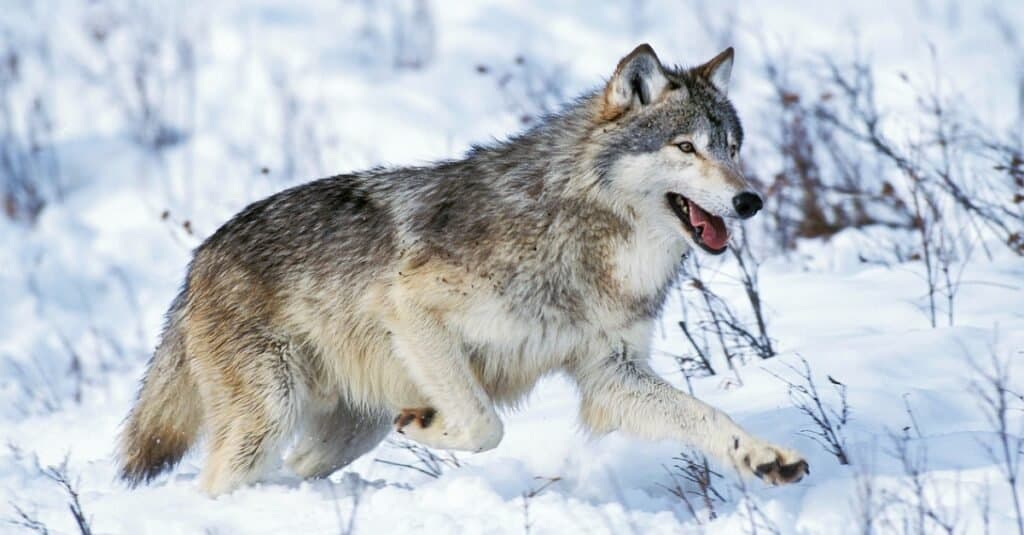
Gray wolves are the largest members of the canine family.
©iStock.com/slowmotiongli
Another one of the largest animals in Alaska is the gray wolf. Often, they’re about as big as an Alaskan Malamute or German Shepherd. In general, these wolves weigh from 100 to 125 pounds, although some weigh over 175 pounds. Even though they have such an intimidating reputation, wolves are actually solitary, mysterious creatures, so spotting one is an added treat. Gray wolves are all over Denali National Park’s forests and tundras. They’re pretty common all throughout Alaska.
6. Lynxes
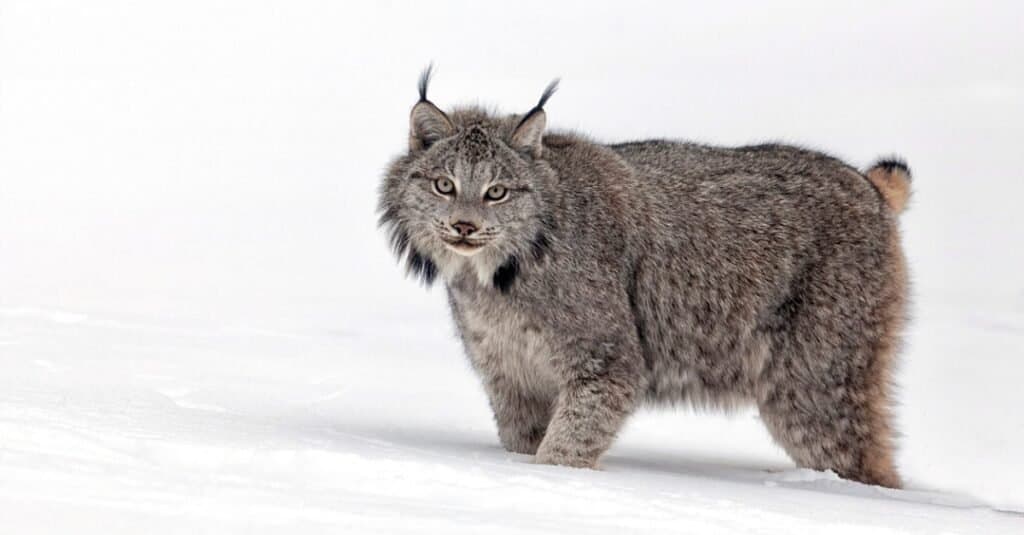
Alaska is home to only one native species of cat, the lynx.
©iStock.com/Lynn_Bystrom
Alaska is home to a large population of lynxes. The Canadian Lynx is a common name for them. The males are called “toms,” and the females are called “mollies.” The size of the cats varies from males to females, with males weighing 35 pounds and females being about five to ten pounds smaller. Their paws, however, are what makes them so distinct. They can be as big as a cougar or mountain lion‘s paws, weighing between 200 and 400 pounds. Because of its large paws, lynxes can cover a distance of more than 1000 miles, so a lynx that lives in Alaska may live in Canada as well.
7. Bald Eagles
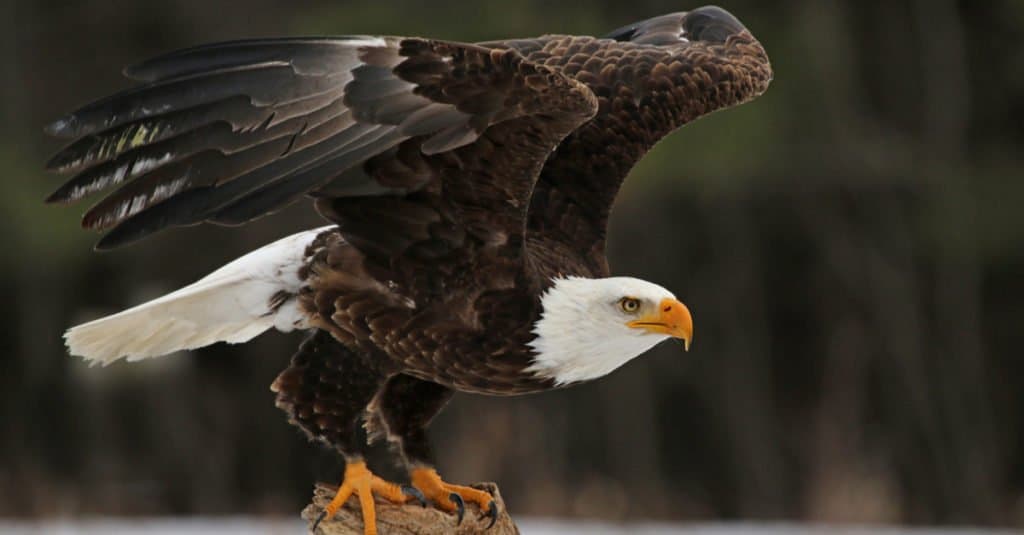
Bald eagles are the largest birds of prey that can be found in Alaska.
©Chris Hill/Shutterstock.com
Alaska’s largest bird, the bald eagle, has been America’s symbol since 1782. Alaska happens to have the highest concentration of them. There are an estimated 30,000 bald eagles living in Alaska. Bald eagles are Alaska’s largest resident birds of prey, with a wing span of up to 7.5 feet (2.3 m) and weights ranging from 8 to 14 pounds (3.6 – 6.4 kg). The bird is definitely one of Alaska’s largest animals and doesn’t seem to be fazed by its size.
8. Polar Bears
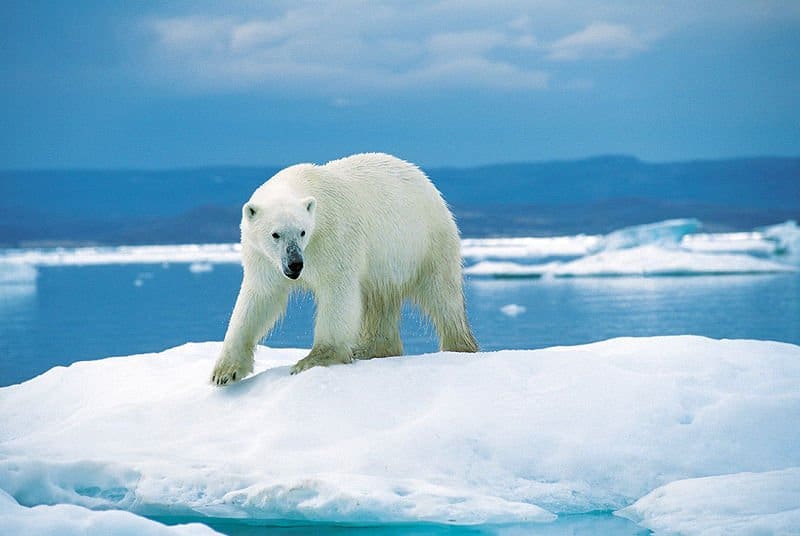
There are an estimated 4,000 to 7,000 polar bears in Alaska.
An adult polar bear can weigh more than 1300 pounds and measure more than 8 feet, 6 inches from nose to tail. This makes the polar bear the largest carnivore on Earth. Polar bears are a very common species in polar regions, especially along coastlines and on the southern edges of the ice sheet, where they are most abundant. In Alaska, you’ll find them mostly on the frozen sea, but occasionally on land near towns like Kaktovik, Utqiagvik, and Kotzebue. A polar bear is definitely one of those animals that we don’t want to cross paths with accidentally.
Summary of the 8 Largest Animals in Alaska
| Name of Animal | Size | Location |
|---|---|---|
| Moose | 1,400 pounds | Southeast Alaska to Arctic slope. |
| Caribou | 175-400 pounds | Denali National Park, but on the move. |
| Grizzly Bears | 300-900 pounds | Alaskan coast. |
| Dall Sheep | 155+ pounds | Alpine pastures and mountain ridges. |
| Gray Wolves | 100-125 pounds | Widespread. |
| Lynxes | 25-35 pounds | The taiga, i.e., boreal spruce-fir ecosystems. |
| Bald Eagles | 17-26 pounds; 7.5 foot wingspan | Widespread. |
| Polar Bears | 1,300 pounds | Alaskan coastline and southern edges of the ice sheet. |
The photo featured at the top of this post is © flickrfavorites / flickr – License / Original
Thank you for reading! Have some feedback for us? Contact the AZ Animals editorial team.







